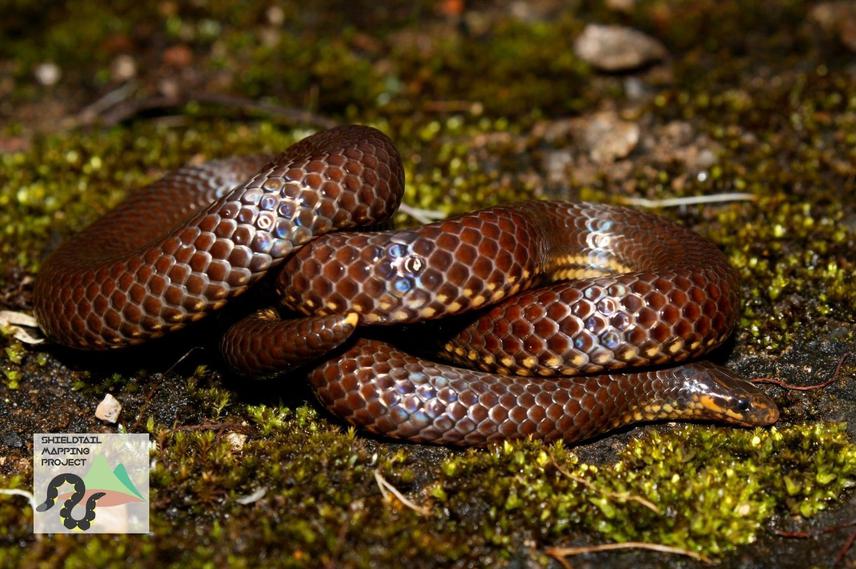Anuj Shinde
Climate change has heightened the extinction risk for numerous species. Among them, shieldtail snakes, a diverse group of non-venomous snakes found in Peninsular India and Sri Lanka, face significant vulnerability due to their fossorial lifestyle, small size, limited distribution, and data deficiency. To address this data deficiency, we started the Shieldtail Mapping Project, a citizen science initiative to popularise shieldtails and gather information on their distribution and activity patterns. India is home to 47 out of the 65 recognised shieldtail species, while the rest inhabit Sri Lanka. Among these, over 30% of shieldtails are deemed threatened by the IUCN red list. A staggering 17 species have remained ‘Data Deficient’ across three assessment rounds, highlighting the urgent need for data collection. Through the Shieldtail Mapping Project, we have gathered new information and educated the public to better identify and document shieldtail diversity.

This Travancore Hill Thorntail Snake (Platyplectrurus madurensis) was observed near Kodaikanal town in southern India. It is one of the few shieldtail species (family: Uropeltidae) that don’t have a flattened, shield-like tail. © Vivek Cyriac.
In the proposed project, we will expand our work by empowering local naturalists living alongside these snakes to identify and document shieldtails. By combining new data during this project, our efforts will take an evidence-based approach to assessing the conservation status of shieldtail snakes. We will empower local communities and conduct on-site outreach in plantations and estates in the Western Ghats, where misbeliefs and indiscriminate slaughter of shiedltails are common. This project focuses on sites outside protected areas, primarily within plantations and estates, which were once rainforests and continue to serve as habitats for shieldtails, offering them conducive conditions to thrive. However, shieldtails often fall victim to killings resulting from misconceptions. Many people wrongly perceive shieldtail snakes as venomous or dangerous, while some local communities have myths that touching shieldtail snakes causes leprosy. Such misconceptions lead to fear and a reflexive response of killing shieldtails when encountered, perpetuating the harmful cycle of human-snake conflicts. This study, through collaborative knowledge generation, aims to transform public attitudes toward shieldtail conservation.
We also aim to reassess the IUCN status of shieldtails using the data gathered from our citizen science and outreach initiatives. Our approach focuses on bilateral information transfer between local communities and scientists which will allow us to gather extensive data on these snakes. Ultimately, we aim to generate greater interest among local communities and naturalists for these lesser-known fossorial snakes while employing data-driven approaches to identify conservation requirements.
Header: Red-lined Earth Snake (Uropeltis rubrolineata).